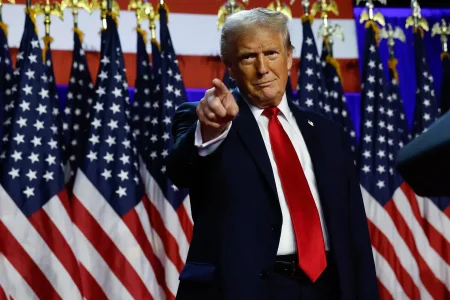Bitcoin Shatters $100,000 Barrier: A New Era of Digital Finance Emerges
In a stunning turn of events that underscores the meteoric rise of cryptocurrencies, Bitcoin has surged past the $100,000 mark, cementing its status as a major financial asset. This historic milestone signifies a paradigm shift in the global financial landscape, capturing the attention of central banks, corporations, and governments worldwide. No longer dismissed as a niche technology embraced by tech enthusiasts, Bitcoin’s ascent demonstrates its growing acceptance as a viable store of value and potential hedge against economic uncertainty. The narrative surrounding Bitcoin has evolved dramatically, transitioning from "magic internet money" to a serious contender in the world of finance.
The burgeoning adoption of Bitcoin is increasingly difficult to ignore. El Salvador’s pioneering move to embrace Bitcoin as legal tender in 2021 has reportedly yielded over $333 million in profits, bolstering the cryptocurrency’s credibility on the international stage. Furthermore, discussions within the incoming Trump administration regarding the establishment of a strategic Bitcoin reserve signal a growing recognition of the digital asset’s potential strategic importance. This move mirrors the establishment of the Strategic Petroleum Reserve (SPR), suggesting a parallel view of Bitcoin as a critical resource for national economic security.
Bitcoin’s allure is partially rooted in its similarities to gold, a traditional safe-haven asset. Federal Reserve Chairman Jerome Powell’s comparison of Bitcoin to gold, emphasizing its virtual and digital nature, highlights this connection. Like gold, Bitcoin possesses a fixed supply, capped at 21 million coins, creating inherent scarcity. This limited supply, coupled with increasing trust and wider acceptance, has fueled Bitcoin’s remarkable price appreciation. While gold boasts a long history and established role in global commerce, Bitcoin is forging its own path as a modern, digital store of value, particularly appealing in times of economic turbulence. The Bitcoin-to-gold ratio, which recently reached a new all-time high, reflects this growing appeal.
The shifting political landscape is also contributing to Bitcoin’s rise. President-elect Donald Trump’s nomination of Paul Atkins, a crypto-friendly lawyer, to head the Securities and Exchange Commission (SEC), suggests a move towards greater regulatory clarity in the crypto space. Atkins’ previous tenure at the SEC was marked by his advocacy for balanced, innovation-friendly policies, potentially paving the way for increased institutional investment in cryptocurrencies. The appointment of David Sacks, a prominent venture capitalist and advocate for clear crypto regulations, as "AI and crypto czar" further reinforces this trend. Sacks’ leadership could position the U.S. at the forefront of emerging technologies, including Bitcoin, blockchain, and AI. Furthermore, Senator Cynthia Lummis’ proposed BITCOIN Act, aimed at creating a U.S. strategic Bitcoin reserve, reflects growing political support for the digital asset.
Major financial institutions are increasingly bullish on Bitcoin’s prospects. Bernstein Private Wealth Management and Standard Chartered have both projected Bitcoin reaching $200,000 by late 2025, driven by the influx of institutional investment. Large investors, including corporations, pension funds, and endowments, are beginning to incorporate Bitcoin into their portfolios, recognizing its potential for diversification and growth. The potential for U.S. retirement funds or a strategic Bitcoin reserve to allocate even a small percentage of their assets to Bitcoin could significantly amplify demand. MicroStrategy’s strategic decision to treat Bitcoin as a corporate treasury reserve asset further underscores this trend.
For investors, Bitcoin’s ascent presents both opportunities and challenges. Its rise to over $100,000 per coin signifies its growing importance as a financial instrument. However, its inherent volatility necessitates a cautious approach. While gold tends to experience more gradual price movements, Bitcoin’s price can fluctuate dramatically. Prudent allocation strategies are essential to manage risk while participating in Bitcoin’s potential upside. As regulatory clarity improves and government interest in strategic reserves grows, Bitcoin’s credibility and longevity are further enhanced. While Bitcoin is unlikely to replace gold entirely and carries inherent risks, its crossing of the $100,000 threshold marks a pivotal moment in its evolution, solidifying its position as a legitimate financial asset deserving of serious consideration.















